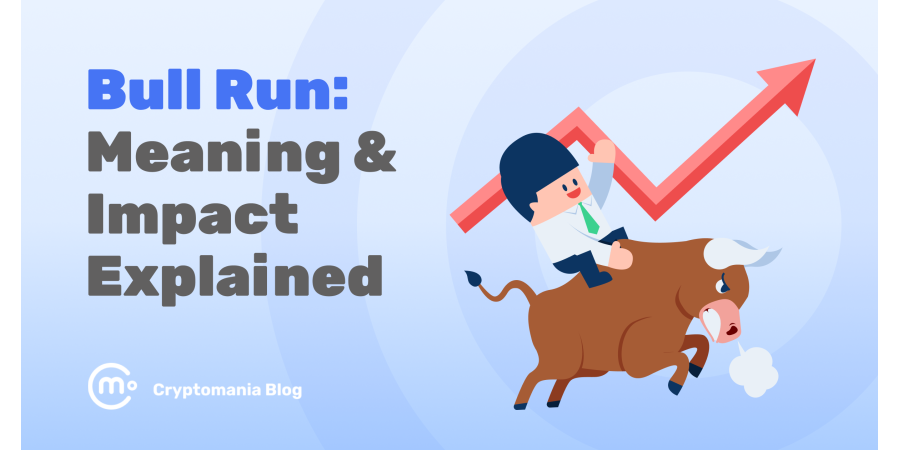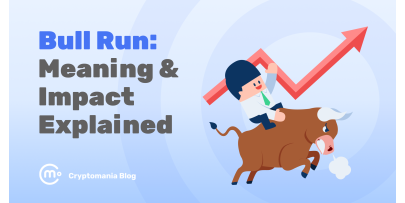

TL;DR: A bull run is a time in the crypto market when the prices of specific assets are going up.
To get a clearer idea of what a ‘bull run’ means in crypto, first, we should talk about ‘bull’ and ‘bear’ markets.
Think of them as the investor’s weather report, giving you a heads-up on the financial landscape’s highs and lows. We’ll unpack these terms and see how they shape the crypto market.
What is a bull market?
A bull market, also known as a ‘bull run,’ is when most investors are buying, demand is high, confidence is strong, and prices are going up. If you notice prices shooting up in a market, it might mean investors are feeling optimistic or “bullish” about prices going even higher, signaling the start of a bull market.
Investors who think prices will keep going up are called “bulls.” As confidence grows, more investment follows, pushing prices even higher in a positive cycle.

Since a cryptocurrency’s price is heavily tied to public confidence, some investors gauge this optimism (called “market sentiment”) to make decisions.
How do you know when a bull market is over?
What is a bear market?
Bear markets happen when there’s more supply than demand, confidence drops, and prices fall. Those who expect prices to keep dropping are called “bears.” Bear markets can be tricky, especially for new traders.
Predicting when a bear market will end or hit rock bottom is tough. Bouncing back usually takes time and depends on lots of outside factors like the economy, how investors feel, and world events.
But bear markets aren’t all bad. If you’re in for the long haul, buying during a bear market can pay off when things pick up again. Short-term investors can look for quick price jumps or drops. Advanced traders might try short selling, betting on prices falling. Dollar-cost averaging is another tactic, where you invest a fixed amount regularly, smoothing out risks during market ups and downs.





